Of all the things to do in Bath, sightseeing is one of the most rewarding. Stunning sights crop up around almost every corner of the city, and most of them won’t cost you a penny. Here are a few to get you started.
1. The Royal Crescent
In a city packed with world-class architecture, The Royal Crescent still steals the show. A sweeping arc of stunning Georgian stone townhouses hugging an expansive green lawn, it was designed by John Wood the Younger in the 1760s to give wealthy residents the feel of country living in the heart of the city, a mission it can be safely said he accomplished!
Today, the Crescent's facade still looks largely the same as it did when it was first completed in 1774, transporting you back to Regency England as you follow the curve of the street and lounge in the parkland opposite. And, if the mood takes you, stop by the take afternoon tea at the beautiful Royal Crescent Hotel & Spa.
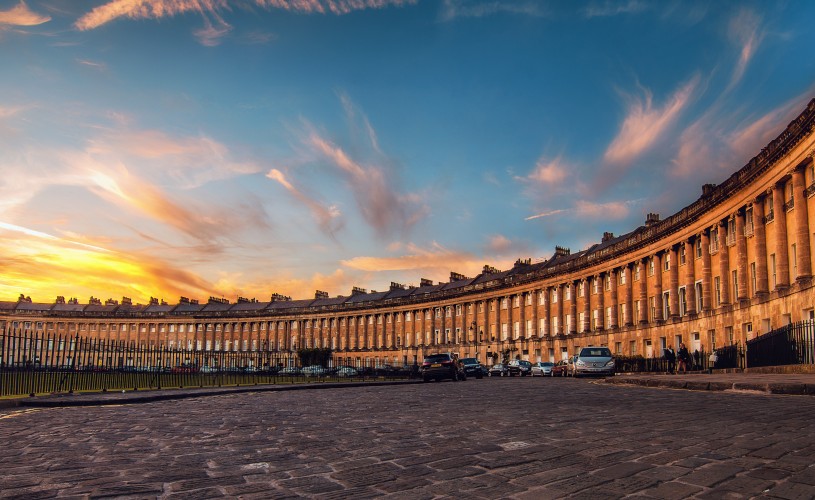
Image - The Royal Crescent
2. The Circus
Another Georgian marvel just a five minute walk away from the Royal Crescent, this 360-degree masterclass in design is the work of John Wood the Elder. Inspired by ancient pagan sites like Stonehenge and classical Roman architecture, it has long been one of Bath’s most sought-after addresses. Former residents include the artist Thomas Gainsborough and former British Prime Minister William Pitt the Elder.
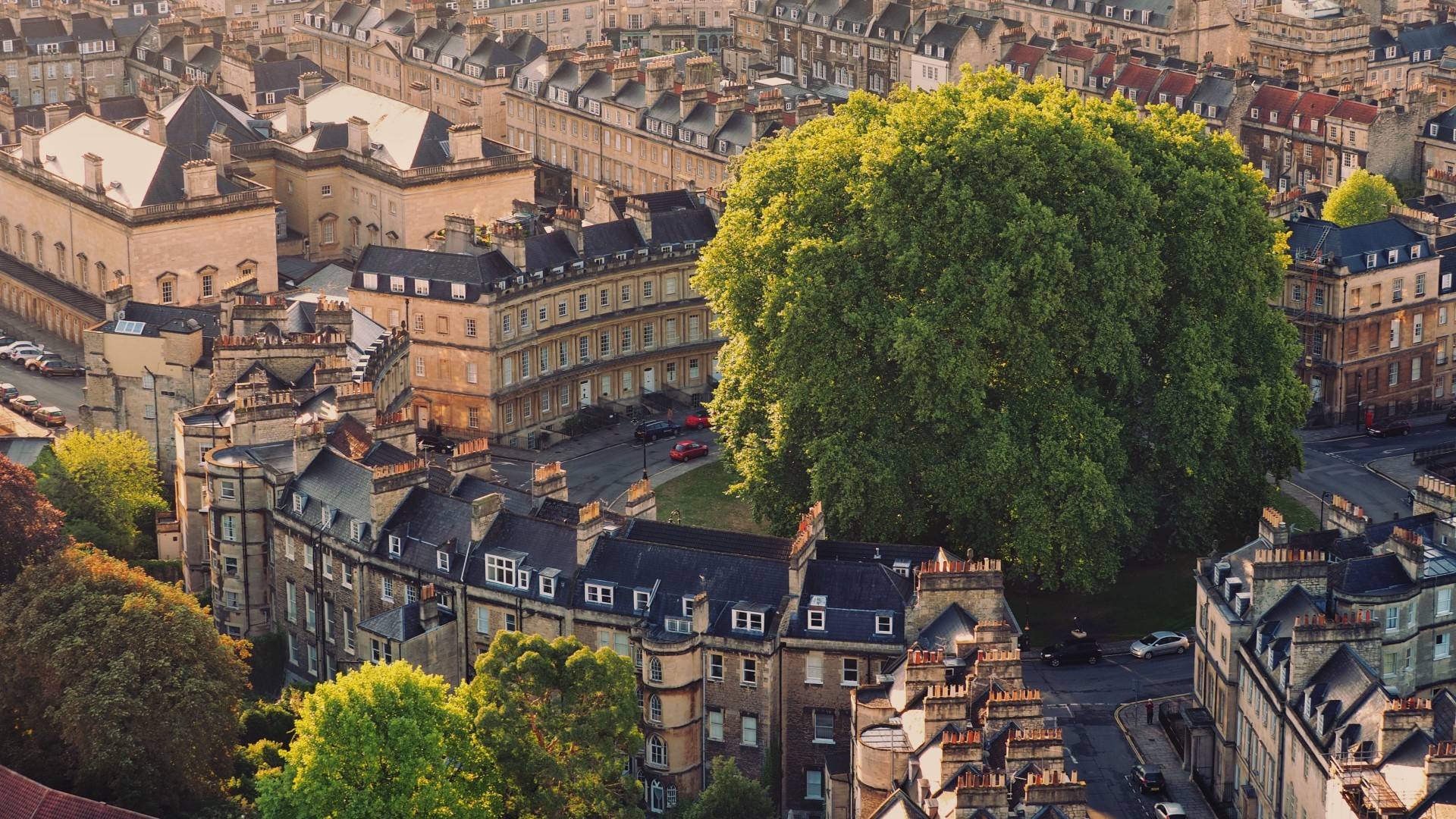
Image - The Circus
3. Pulteney Bridge
Completed in 1774, Pulteney Bridge brings a touch of Tuscany to Bath. Inspired by the Ponte Vecchio in Florence and lined by shops and eateries on both sides, it is one of only four such structures in the world. Viewed from across the river, the bridge’s elegant arches are complemented by the curved cascades of the weir just downstream; this scene looks particularly magical when lit up at night.
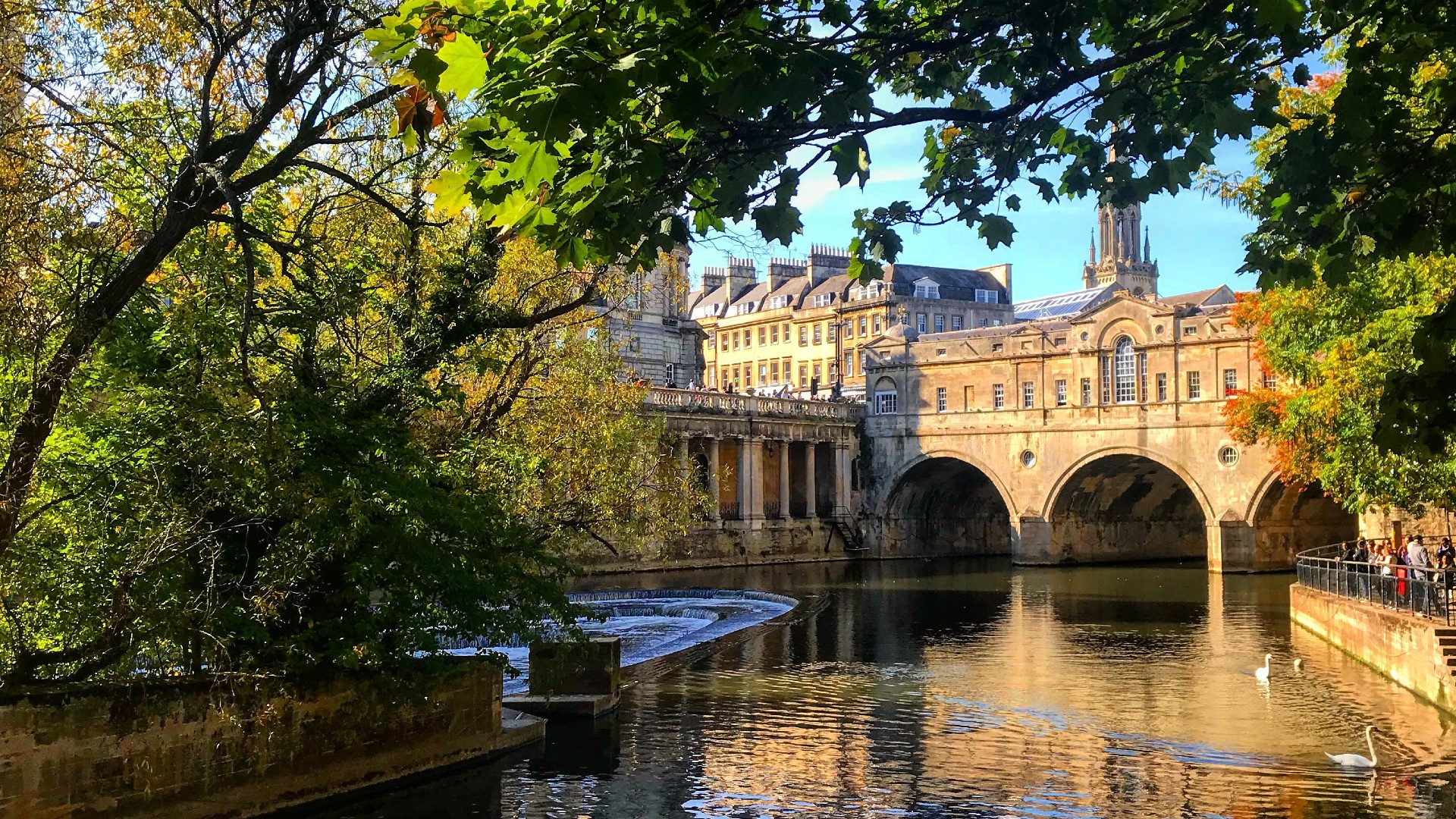
Image - Pulteney Bridge
4. Alexandra Park
Perched on the summit of a wooded hill overlooking the city, Alexandra Park is one of the best places to go for views of Bath and its surrounding countryside. It’s accessible by car or bus, or by climbing the zig-zag path that rewards your efforts with spectacular vistas once you reach the top.
 Lloyd Evans Photography.jpg)
Image - View from Alexandra Park
5. Bath Abbey
There has been a place of worship on this spot for over 1,000 years (King Edgar, the first king of all England, was crowned here in 973 AD), but many of the present-day Abbey’s most spectacular features are more recent. The decorative ladders of angels carved into the Abbey's West Front are inspired by a dream of ascending and descending angels Oliver King, Bishop of Bath from 1495 to 1503, is said to have experienced, while the magificent Victorian Gothic interior is the work of Sir George Gilbert Scott. Scott made numerous improvements between 1864 and 1874, including the addition of the soaring vaulted stone ceiling above the nave.
You can peek behind the scenes of life at the Abbey throughout the ages at the venue's Discovery Centre, a unique heritage space based inside the ancient vaults beneath the Abbey floor. Nearby, you'll find Bath's World Heritage Centre, where you can learn more about the city's World Heritage status, ask about free walking trails and pick up guides to the city.
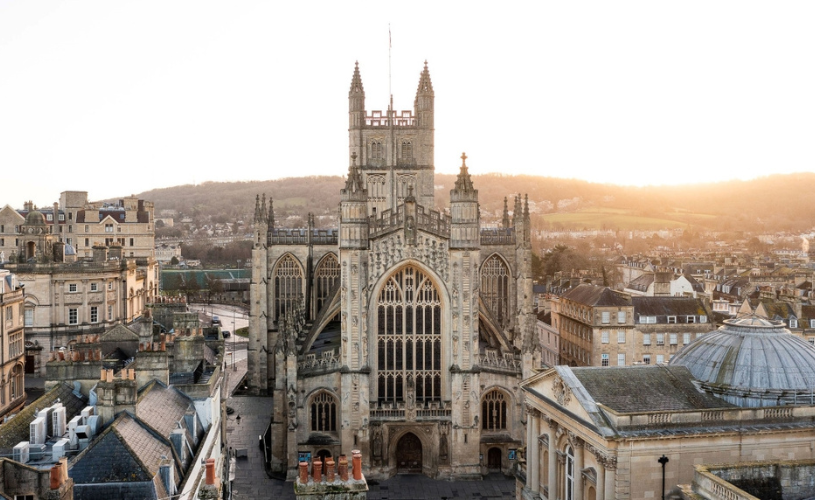
Image - Bath Abbey
6. Prior Park Landscape Garden
Enjoy a peaceful stroll through an immaculately designed eighteenth-century landscaped garden. Created by Bath entrepreneur Ralph Allen (with advice from famed landscape architect Lancelot ‘Capability’ Brown), it’s an oasis of calm just a stone’s throw from the bustling city centre. Explore lakes and winding wooded paths and cross the famous Palladian Bridge, one of only three bridges of its kind in the UK.
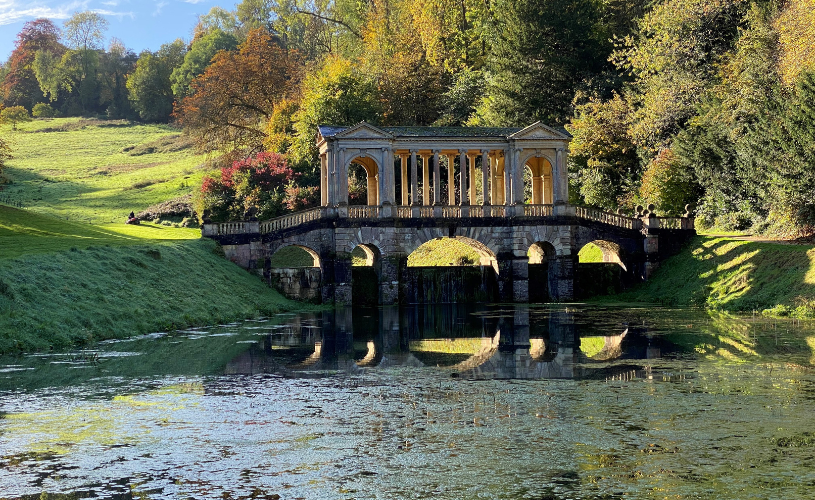
Image - Prior Park
7. Great Pulteney Street
This broad thoroughfare is the longest and widest Georgian street in Bath. The sheer scale is impressive, but the harmonious architectural detail of the buildings lining each side of the street also catches the eye. At the far end of Great Pulteney Street lies The Holburne Museum, once a hotel but now home to a dazzling permanent collection of art and artefacts from across the globe, as well as rotating temporary exhibitions. The street is also bordered by The Rec, home to Bath Rugby.
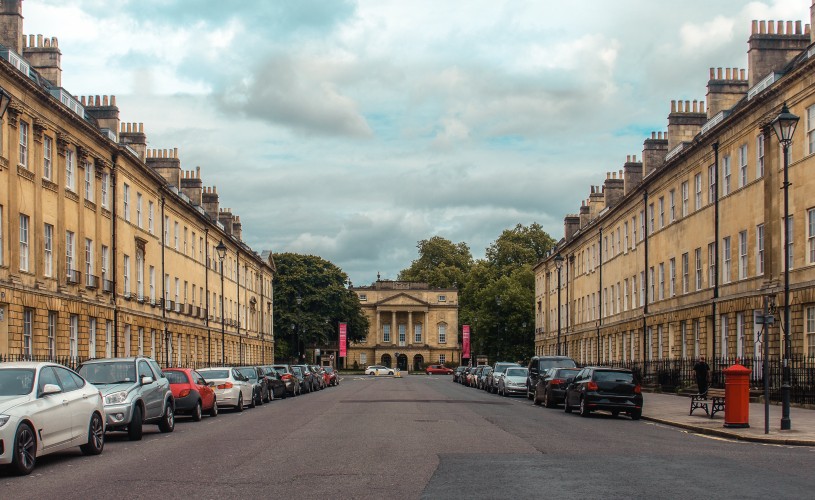
Image - Great Pulteney Street
8. The Pump Room
Back in Jane Austen’s day, the Pump Room was an exclusive haunt of Bath’s rich and famous, who would gather here to take tea, enjoy lavish entertainment, and 'take the waters' in the neighbouring Roman Baths. Its former patrons include Austen herself, as well as fellow legendary author Charles Dickens, no less!
Today, you can follow in their footsteps by visiting for a delectable brunch, morning bakery treats, or afternoon tea, all accompanied by the resident Pump Room Trio or pianist. While you can no longer go for a dip in the Baths themselves, you can sample the hot spa water flowing from the Pump Room's centrepiece fountain, which contains 43 minerals, making for an unusual taste!
"Every creature in Bath… was to be seen in the room at different periods of the fashionable hours” – Northanger Abbey, Jane Austen.

Image: The Pump Room Restaurant
9. Sally Lunn’s Historic Eating House & Museum
Dating back to 1482, Sally Lunn’s on North Parade Passage has a credible claim to being Bath’s oldest surviving house. In actual fact, its history stretches back even further, as excavations in the cellar have revealed artefacts left behind by the city’s early Roman inhabitants. However old the house is, there’s one thing not up for dispute: this is the birthplace of the local delicacy known as the Sally Lunn bun, a taste of which is a vital part of any visit to the city.
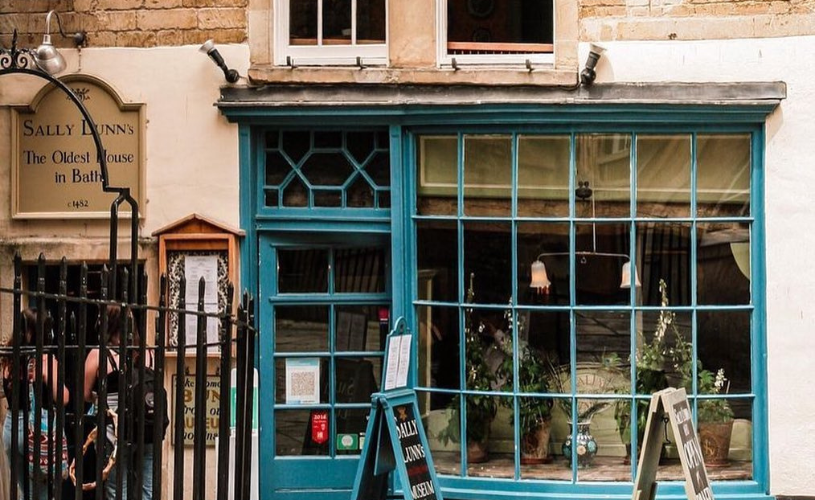
Image - Sally Lunn's exterior, credit Sally Lunn's Historic Eating House & Museum
10. Green Park Station
As lively and bustling today as it must have once been when it was one of Bath’s main railway hubs, Green Park Station is now home to a host of quirky shops, cafés and restaurants. Here, a trip to popular sister restaurants Green Park Brasserie and Bath Pizza Co is a must, where you can savour award-winning food while enjoying live jazz, funk, soul and swing music from talented local artists, or relax on one of the cosy terraces. The station also hosts regular markets on the old concourse, featuring locally produced food and drink, independent art, vintage clothing, antiques and many more.
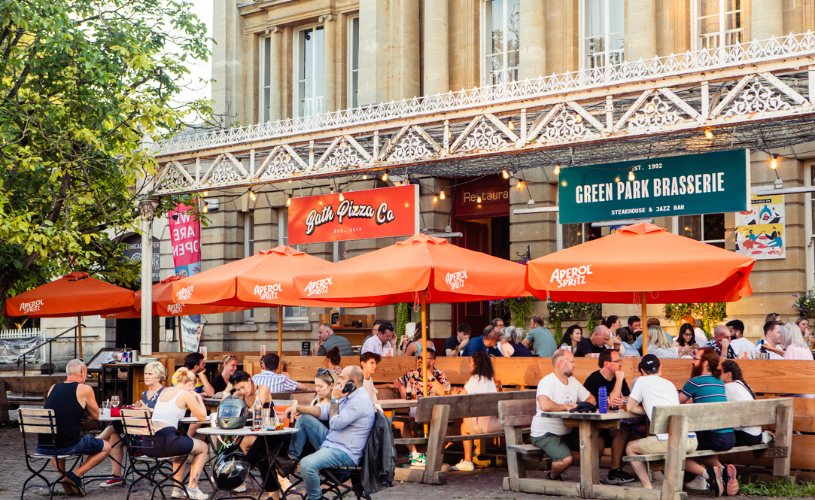
Image - Green Park Brasserie
Join us for a wander around our top ten must-sees in Bath:
Read more
Related
Comments
Comments are disabled for this post.





